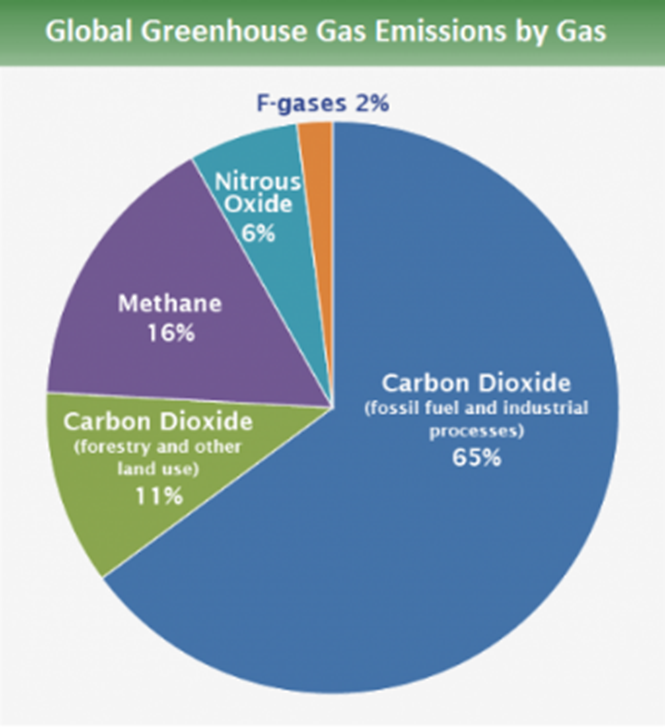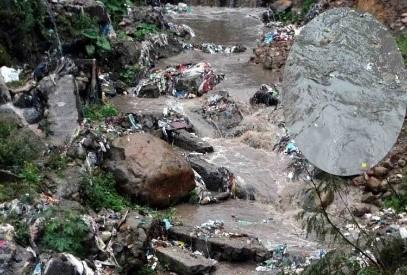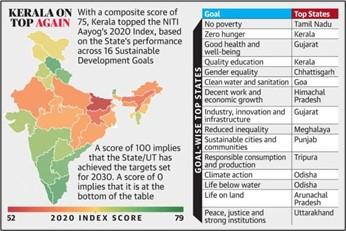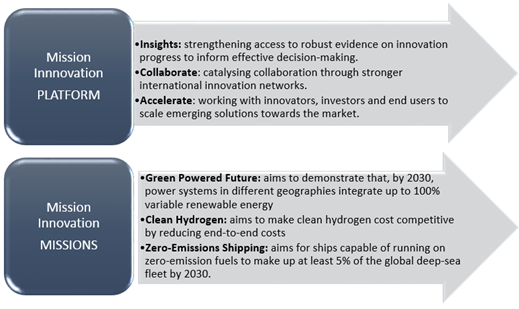Monday, 7th June 2021
G7 corporate tax deal
In News
The G7 group of advanced economies has reached a historic deal to make multinational companies pay more tax.
Details of the Agreement
- Allocation of taxing rights: Known as "pillar one" of the agreement, Market countries are awarded taxing rights on at least 20% of profit exceeding a 10% margin for the largest and most profitable multinational enterprises- digital or not.
- This allows countries to tax a share of the profits earned by companies "that have no physical presence but have substantial sales", for instance selling through digital advertising.
- Global minimum corporate tax rate: The second "pillar" of the agreement commits states to a global minimum corporate tax rate of 15% to avoid countries undercutting each other.
- Climate impact of Investment: The G7 also agreed to give a commitment to make it mandatory for firms to report the climate impact of their investment decisions.
Need for the new Agreement
- Governments have long grappled with the challenge of taxing global companies operating across many countries. That challenge has grown with the boom in huge tech corporations like Amazon and Facebook.
- Currently companies can set up local branches in countries that have relatively low corporate tax rates (commonly called as tax havens) and declare profits there. That means they only pay the local rate of tax, even if the profits mainly come from sales made elsewhere. This is called Base erosion and profit shifting (BEPS).
- Often, these tax havens are the Caribbean Islands such as Bahamas or British Virgin Islands, or countries like Ireland where the corporate tax rate is as low as 12.5% - lower than the proposed minimum rate of 15%.
- This resulted into loss of tax. According to some estimates, US loses nearly $50 billion a year while India’s annual tax loss due to corporate tax abuse is estimated at over $10 billion.
Significance for India
- The pact is expected to benefit India as it is a big market for many tech companies. India’s Equalisation Levy attempts to tax them, but it is low.
- It is a path breaking pact as India would always find it very difficult to keep corporate tax rates artificially lower in a bid to increase much needed foreign direct investments in the country.
- It will benefit India as the effective domestic corporate tax rate is above the threshold, and the country would continue to attract investment.
Challenges ahead
- The agreement will now be discussed in detail at a meeting of G20 financial ministers and central bank governors in July. It will be a challenge getting all major nations on the same page, especially since this impinges on the right of the sovereign to decide a nation’s tax policy.
- A global minimum rate would essentially take away a tool that countries use to push policies that suit them. For instance, tax haven countries attract big MNCs for want of lower tax rates. A lower tax rate is a tool they can use to alternatively push economic activity.
https://www.bbc.com/news/world-57368247
Model Citizen Charter for Panchayats
In news:
Ministry of Panchayati Raj (MoPR) releases a Model Panchayat Citizens Charter.
What is Model Citizen Charter for Gram Panchayats?
- It is a document that represents the commitment of the Panchayat towards standard, quality and time frame of service delivery, grievance redressal mechanism, transparency, and accountability.
- It is prepared by MoPR in collaboration with National Institute of Rural Development & Panchayati Raj.
Objectives of Model Gram Panchayat Citizens’ Charter
- To empower the Citizens in relation to public services and improve service quality on the lines of Citizens expectations.
- To bring professionalism in Panchayat functioning and to reach out to all sections of community without any discrimination.
- To set the standards committed by the Panchayats as useful yardsticks for monitoring and evaluation of service delivery.
Key Features of Model Citizen Charter for Panchayats
- The Gram Panchayat Citizens’ Charter should include the following information-
- Vision and Mission of the Panchayat: The vision implies ultimate direction in which the Panchayat seeks to move. The Mission statement provides the specific objectives which drive the Panchayat in tune with the vision.
- Service Standards / Procedure for obtaining services: It shall include Name and details of the service (including beneficiaries and eligible persons), Time frame to deliver the service and the details of Panchayat official responsible for providing the service.
- Grievance redressal: The Sarpanch and the Panchayat Secretary must be accessible to the Citizens to listen to the grievances and make arrangements to address the complaint effectively.
- Panchayats as facilitators: In instances, wherein Panchayats are not competent enough to directly offer services at the local level, they would act as the facilitators for the service delivery.
Significance
- Panchayats constitute the third tier of government in the rural areas and represents the first level of Government interaction for over 60% of the population. Panchayats are responsible for delivery of basic services (29 in total) as enshrined under article 243G of the Constitution, specifically in the areas of Health & Sanitation, Education, Nutrition, Drinking Water.
- This charter will provide a framework for delivery of the services across the 29 sectors, aligning actions with localised Sustainable Development Goals (SDGs).
- This charter will help in making the citizens aware of their rights while making the Panchayats and their elected representatives directly accountable to the people.
- Charter will help to improve the quality of life through efficient and effective service delivery mechanisms for Panchayat residents, specifically for the welfare of vulnerable and marginalized sections of societyg., women, children, senior citizens, SCs/STs and physically challenged persons.
https://pib.gov.in/PressReleaseIframePage.aspx?PRID=1724464
Climate Neutrality
In News
As the world marked the fifth anniversary (in 2020) of the adoption of the landmark Paris Agreement on climate change, a promising movement for carbon neutrality has been taking shape.

What is climate neutrality?
- Climate neutrality refers to the idea of achieving net zero greenhouse gas (GHG) emissions. ‘Net zero emissions’ refers to achieving an overall balance between GHG emissions produced and GHG emissions taken out of the atmosphere.
- Getting to net zero means we can still produce some emissions, as long as they are offset by processes (such as planting new forests, or drawdown technologies like direct air capture) that reduce GHGs already in the atmosphere.
- This way, it is even possible for a country to have negative emissions, if the absorption and removal exceed the actual emissions. E.g., Bhutan is often described as carbon-negative country because it absorbs more than it emits.
- In reference to climate neutrality, the terms like ‘carbon neutral’ and ‘net zero’ are often used interchangeably since CO2 is the most important contributor to the global warming and climate change. However, technically the term ‘climate neutral’ counts all GHG emissions including CO2.
Why Is Climate Neutrality So Important?
- The earth is now 1.1°C warmer than it was at the start of the industrial revolution. 2010-2019 is the warmest decade on record. On the current path of carbon dioxide emissions, the global temperature is expected to increase by 3 to 5 degrees Celsius by the end of century.
- The warming manifests in ever-worsening extreme weather and potentially catastrophic sea level rise, making some parts of the planet uninhabitable and fuelling hunger and migration.
- The food security concerns, water crisis etc. fuel civil unrest as seen in Sub Saharan Africa and Sahel region.
- As per IPCC, to avoid the worst climate impacts, global GHG emissions will need to drop by half by 2030 and reach net-zero around mid-century.
- Climate action is not a budget buster or economy-wrecker: In fact, shifting to a green economy will add jobs. As per conservative estimates, it could yield a direct economic gain of US$26 trillion through to 2030 compared with business-as-usual.
Global commitments for Climate Neutrality
- The Paris Agreement (COP 21, 2015) sets a long-term goal of achieving a balance between anthropogenic emissions by sources and removals by sinks of GHGs in the second half of this century, on the basis of equity, and in the context of sustainable development and efforts to eradicate poverty.
- This concept of balancing emissions and removals is akin to reaching net-zero emissions. However, it does not set any explicit timeline to reach net zero emissions.
- Since the adoption of Paris Agreement, as of November 2020, more than 110 countries have committed to a net-zero objective. These represent in total around half of the world's GDP and of global CO2 emissions.
- Most importantly, the three major GHG emitters (EU, China, USA) have now clearly established Climate neutrality/ carbon neutrality as their horizon.
- The European Union (EU) has decided to become climate neutral by 2050. China will become carbon neutral by 2060. Also, US is working on becoming a net zero emissions economy by no later than 2050.
|
Other efforts taken - · UN Climate Change launched Climate Neutral Now in 2015 in order to encourage stakeholders around the world to work towards net zero emissions and a climate neutral world. Its aim is to have a ‘climate neutral’ world by 2050. · The UN High Level Climate Champions’ Race to Zero campaign also calls on regions, cities, businesses, investors and civil society to submit plans to reach net-zero emissions by 2050 in advance of the COP 26. · The Carbon Neutrality Coalition (CNC) brings together a group of pioneering countries that have agreed to develop ambitious climate strategies to meet the long-term objectives of the Paris Agreement. Its members include Canada, Japan, Colombia, Costa Rica, Denmark, Ethiopia, Finland, France, Germany etc. |
Climate Neutrality efforts and the Common But Differentiated Responsibilities (CBDR) Principle
- CBDR principle identifies the greater role of developed countries to tackle the climate crisis and to support poor countries through technology and finances to build capacities for climate actions.
- Not all countries are in the same position to pledge for Climate neutrality. Far greater efforts are needed to build resilience in vulnerable countries (e.g., Least developed countries (LDCs) and Island countries) and for the most vulnerable people.
- Countries like India need to increase their emissions as it presses for higher growth to pull hundreds of millions of people out of poverty. Hence, they should not be forced to adopt a strict timeline.
- Even as poor and developing countries pursue net zero, developed countries must deliver on their commitment to technology transfer and provide $100 billion dollars a year for mitigation, adaptation, and resilience in developing countries.
India’s Position on Climate Neutrality
India, the world’s third biggest emitter of greenhouse gases, after the US and China, is yet to commit to a net zero target. India puts forward the following arguments in favour of its position-
- The net-zero goal does not figure in the 2015 Paris Agreement. The Paris Agreement only requires every signatory to take the best climate action it can.
- The developed nations have never delivered on their past promises and commitments.
- No major country achieved the emission-cut targets assigned to them under the Kyoto Protocol, the climate regime preceding the Paris Agreement.
- Even worse is their track record on their commitment to provide money, and technology, to developing and poor countries to help them deal with the impacts of climate change.
- India has been arguing that the 2050 carbon-neutrality promise might also fail as other climate commitments. India suggests instead of opening up a parallel discussion on net-zero targets outside of the Paris Agreement framework, countries must focus on delivering on what they have already promised in Nationally determined contributions (NDCs).
India, however, does not rule out the possibility of achieving carbon-neutrality by 2050 or 2060. However, it does not want to make an international commitment in advance. Several studies have shown that India is the only G-20 country whose climate actions are compliant to the Paris Agreement goal of keeping global temperatures from rising beyond 2°C. India is well on its way to achieving its three targets under the Paris Agreement, and looks likely to overachieve them.
Way Forward
- Policy Front: NDCs are an important tool to align near- and long-term goals. When informed by a country’s long-term vision, these documents can help governments implement the types of policies, signals, targets and other enhancement strategies necessary in the nearer term to realize an ambitious mid-century objective.
- Technology: Switch to renewable energy like solar and wind, and clean transportation through e-vehicles would also play a huge role in lowering emissions.
- Technology should also be used to capture emissions through techniques such as Carbon Capture and Storage.
- Change Dietary Habits: Other harmful emissions come from agriculture (livestock produce significant levels of methane, a greenhouse gas). These could be reduced drastically if we eat less meat and more plant-based foods.
- Reducing emissions: "Nature-based solutions" include forests, peatbogs, mangroves, soil and even underground seaweed forests, which are all highly efficient at absorbing carbon.
- CBDR: This principle must be followed in terms of finance, technology, loss and damage etc. which will bring an ethical perspective in global environmental governance as well as boost the capacity of poor and developing countries to achieve the net zero targets.
Conclusion
Although net-zero targets continue to gain traction with governments and companies, critiques of net-zero targets have emerged. They fear that the “net” aspect of net-zero targets could dampen efforts to rapidly cut emissions. Also, some countries’ net-zero targets rely on purchasing emissions reductions, delaying reductions within their own boundaries. Moreover, the time horizon for net-zero targets — typically 2050 — looks distant. All these aspects must be looked into, and policies must be designed to take care of these apprehensions to achieve the climate neutrality for the globe.
https://www.iea.org/reports/net-zero-by-2050
https://indianexpress.com/article/explained/why-india-opposes-net-zero-7263422/
https://www.myclimate.org/information/faq/faq-detail/what-does-net-zero-emissions-mean/
https://www.myclimate.org/information/faq/faq-detail/what-is-climate-neutrality/
https://www.icao.int/environmental-protection/Documents/CNUN_report_09.pdf
https://unfccc.int/process-and-meetings/the-paris-agreement/the-paris-agreement
https://brightly.eco/climate-neutrality-meaning/
https://news.un.org/en/story/2020/12/1078612
https://unfccc.int/blog/a-beginner-s-guide-to-climate-neutrality
https://www.wri.org/insights/net-zero-ghg-emissions-questions-answered
https://www.climatecouncil.org.au/resources/what-does-net-zero-emissions-mean/
https://www.weforum.org/agenda/2020/09/carbon-emissions-net-zero-global-warming-climate-change
https://sphera.com/glossary/what-is-carbon-neutrality/
https://www.weforum.org/agenda/2021/03/usa-us-american-climate-change-environment/
https://carbon-neutrality.global/wp-content/uploads/2018/09/CNC-Declaration-final.pdf
This Day in History Pietermaritzburg station
June 7 marks the day of Mahatma Gandhi’s first act of civil disobedience. On this very day in 1893, Mohandas Karamchand Gandhi, a young lawyer then, was thrown off the train’s first class “whites-only” compartment at Pietermaritzburg station in South Africa for refusing to give up his seat. Deriving thoughtful inspiration from this incident, Gandhi ji led his mission to fight injustice and provide for equal rights for all humans in India and abroad.

Image of the Day - Buddha in Contemplation
An Italian artist, Salvatore Garau, has sold his “Buddha in Contemplation” invisible sculpture for $18000. The work consists of a 5×5-foot square full of nothing. He says, “It is a work that asks you to activate the power of imagination, a power that anyone has, even those who don’t think they have it. Just as music, songs or prayers help us to see what we do not see, so even a title feeling is enough to make us view and perceive an existence.”

Organization for the Prohibition of Chemical Weapons (OPCW)
- Context: OPCW has recently found multiple instances of use of chemical weapons in Syria.
- Chemical Weapons Convention (CWC) is the world’s first multilateral disarmament agreement to provide for the elimination of an entire category of weapons of mass destruction within a fixed time frame.
- OPCW was established in 1997 with the entry into force of the CWC.
- It is an inter-governmental organization with 193 members seated in Hague.
- The OPCW strives to fulfill the Convention’s mandate to end the development, production, stockpiling, transfer and use of chemical weapons; to prevent their re-emergence; to ensure the elimination of existing stocks of such weapons
.jpg)
Primary source: https://www.opcw.org/about/history
Devika River project
- Context: Review of the progress of Devika River Project in J&K.
- This project under the National River Conservation Plan (NRCP) aims to develop bathing “ghats”(places) on the banks of the Devika River, remove encroachments, restore natural water bodies and catchment areas.
- The project includes the construction of three sewage treatment plants, sewerage network, development of two cremation ghats, protection fencing and landscaping, small hydropower plants and three solar power plants.

Primary source: https://pib.gov.in/PressReleseDetail.aspx?PRID=1724159
Bamboo Market Window on GeM Portal
- Context: The National Bamboo Mission and the Government e-Marketplace (GeM) have initiated a window named “The Green Gold Collection” on GeM portal for bamboo products.
- The Window showcases a range of bamboo products, handicrafts, disposals, and office utility products on the GeM portal with anaim to provide bamboo artisans and entrepreneurs with market access to government buyers.
- It seeks to promotethe adoption and use of bamboo products among Government buyers and usher a sustainable rural economy for an Atmanirbhar Bharat.
- GeM is a one-stop National Public Procurement Portalto facilitate online procurement of common use Goods & Services required by various Central and State Government Departments/Organizations /Public Sector Undertakings (PSUs).

Primary source: https://pib.gov.in/PressReleaseIframePage.aspx?PRID=1724238
Rules for Post-Retirement Hiring of Officials by Government Organizations
- Context: The Central Vigilance Commission (CVC) has laid down a defined procedure to be followed by government organizations for getting vigilance clearance before employing a retired official on contractual or consultancy basis.
- Certain important provisions are:
- Requirement of vigilance clearance from the employer organization
- Filling up of posts through proper advertisements
- Rules for cooling off period
India’s coastal cities need to brace up for super cyclones
Essence- Global temperature is rising due to greenhouse gas emission and loss of carbon sinks leads to serious consequences for ecosystems and human beings. According to IPCC repot, the number of cyclones has increase over the years which is aggravating coastal hazards and impacting some Indian mega cities. Recently India experienced severe cyclones where, pre monsoon cyclones in Arabian sea has been observed as a new phenomenon (e.g.: Nisarga in 2020 and recently Tauktae). India has one of the longest coastlines in the World, but development process and lack of protection measures have impacted fragile coastal habitats and landforms, which act as a defensive force against cyclones. To deal with the issue government came up with Coastal Regulation Zone (CRZ) with several objective to manage coastal regions on scientific principles and develop coastal climate resilient infrastructure.
Why you should read this article?
- To understand reasons and severity of global warming.
- To know the reasons of increasing frequency and intensity of cyclones in India and how its threatening Indian coastal cities.
- To know steps taken by the government in recent past to help cities cope with climate change effect.
- To understand the concept of CRZ (important for prelims)
Article Link: https://www.thehindubusinessline.com/opinion/indias-coastal-cities-need-to-brace-up-for-super-cyclones/article34730373.ece
Why the distortions built into GST are coming undone
Essence: A consensus on a zero per cent GST rate on products essential to fight Covid-19 remained elusive at the Council meeting on May 28. This article explains the reasons which lies in the distorted design and incentive structure of the GST itself and suggests a proportional representation of voting in the GST Council either as a proportion of the size of a state or by its contribution to the GST revenue pool so that the tax policy reflects the needs and aspirations of people in a democracy.
Why should you read this article?
- Briefly know about the revenue sharing mechanism under GST between Centre and States.
- Identify and analyse the two inherent problems with present GST regime- net-transfers increasingly becoming one-sided and the distortionary “one state one vote” model.
- Understand why most large states are ready to forego the COVID tax revenue whereas 19 states representing the 30 per cent of the population seem keen to continue to levy GST on Covid products.
Article Link: https://indianexpress.com/article/opinion/columns/why-the-distortions-built-into-gst-are-coming-undone-7346960/
Chennai Community Grow 25 Miyawaki Forests Across Tamil Nadu, Raise 65,000 Trees
About Miyawaki Technique:
- Japanese botanist Akira Miyawaki envisaged the concept of Miyawaki forests in the 1980s.
- The technique involves growing a dense forest in a small area with shrubs, trees, and canopies.
- The densely planted vegetation grows exponentially in months rather than years, following their natural growth pattern.
- In recent years, the concept has received wider acceptance as it looks promising to mitigate theclimate crisis.

Chennai Community Grows 25 Miyawaki Forests Across Tamil Nadu
- Chennai-based group has created several green lungs in the city using the great Miyawaki’s concept.
- The citizens started tree plantation drives during their college days as the rapidly degrading forest cover in the city worried them.
- To find a speedy solution, they planted 25 Miyawaki forests with 65,000 native trees, covering 9.2 acres of land.
Outcome:
- Tiny green oases across the city and its outskirts have been created.
- It led to creation of safe habitat for local biodiversity.
- Restoration of forest at rapid pace which was destroyed in 2016 by cyclone Vardah hit Chennai
Where can we use this case study?
- Restoration of green cover in urban areas, sustainable urbanization, afforestation technique, social forestry, role of community participation in improving the face of earth
Quotes for the topic:
- Be the change you wish to see in the world-Mahatma Gandhi
- "Therecan be no Plan B because there is no planet B," UN Secretary-General Ban Ki-moon.
Share the article
Get Latest Updates on Offers, Event dates, and free Mentorship sessions.

Get in touch with our Expert Academic Counsellors 👋
FAQs
UPSC Daily Current Affairs focuses on learning current events on a daily basis. An aspirant needs to study regular and updated information about current events, news, and relevant topics that are important for UPSC aspirants. It covers national and international affairs, government policies, socio-economic issues, science and technology advancements, and more.
UPSC Daily Current Affairs provides aspirants with a concise and comprehensive overview of the latest happenings and developments across various fields. It helps aspirants stay updated with current affairs and provides them with valuable insights and analysis, which are essential for answering questions in the UPSC examinations. It enhances their knowledge, analytical skills, and ability to connect current affairs with the UPSC syllabus.
UPSC Daily Current Affairs covers a wide range of topics, including politics, economics, science and technology, environment, social issues, governance, international relations, and more. It offers news summaries, in-depth analyses, editorials, opinion pieces, and relevant study materials. It also provides practice questions and quizzes to help aspirants test their understanding of current affairs.
Edukemy's UPSC Daily Current Affairs can be accessed through:
- UPSC Daily Current Affairs can be accessed through Current Affairs tab at the top of the Main Page of Edukemy.
- Edukemy Mobile app: The Daily Current Affairs can also be access through Edukemy Mobile App.
- Social media: Follow Edukemy’s official social media accounts or pages that provide UPSC Daily Current Affairs updates, including Facebook, Twitter, or Telegram channels.





